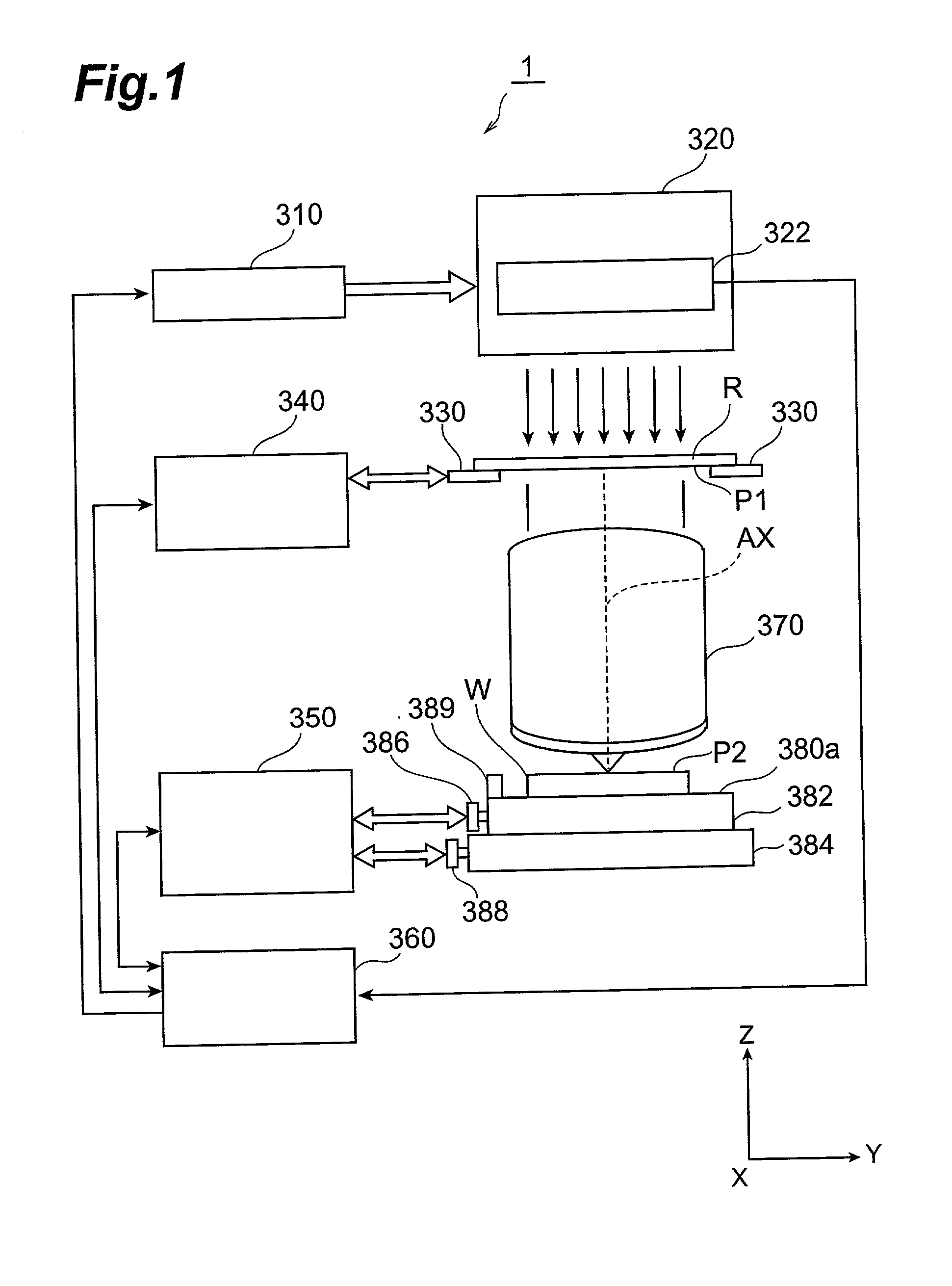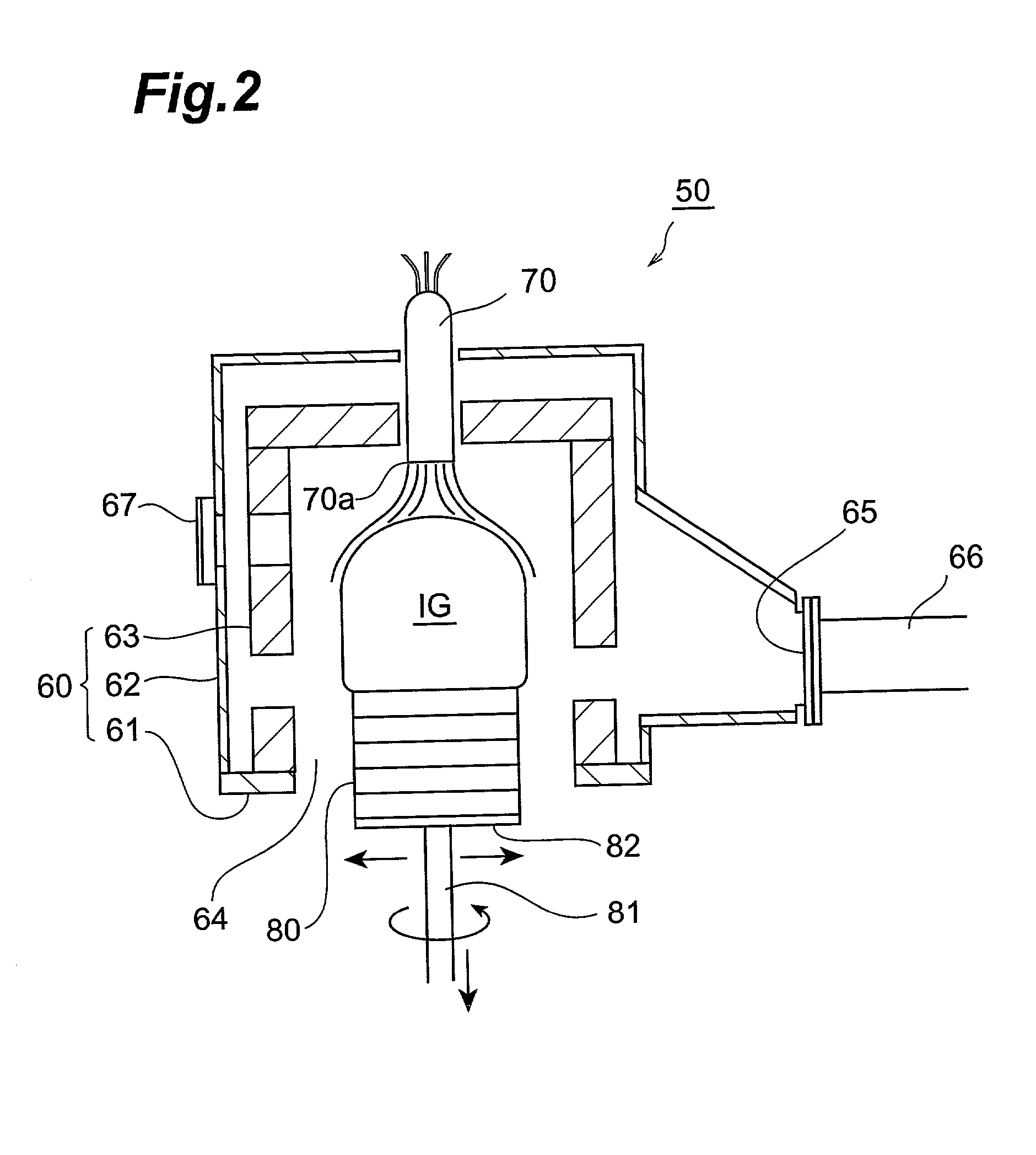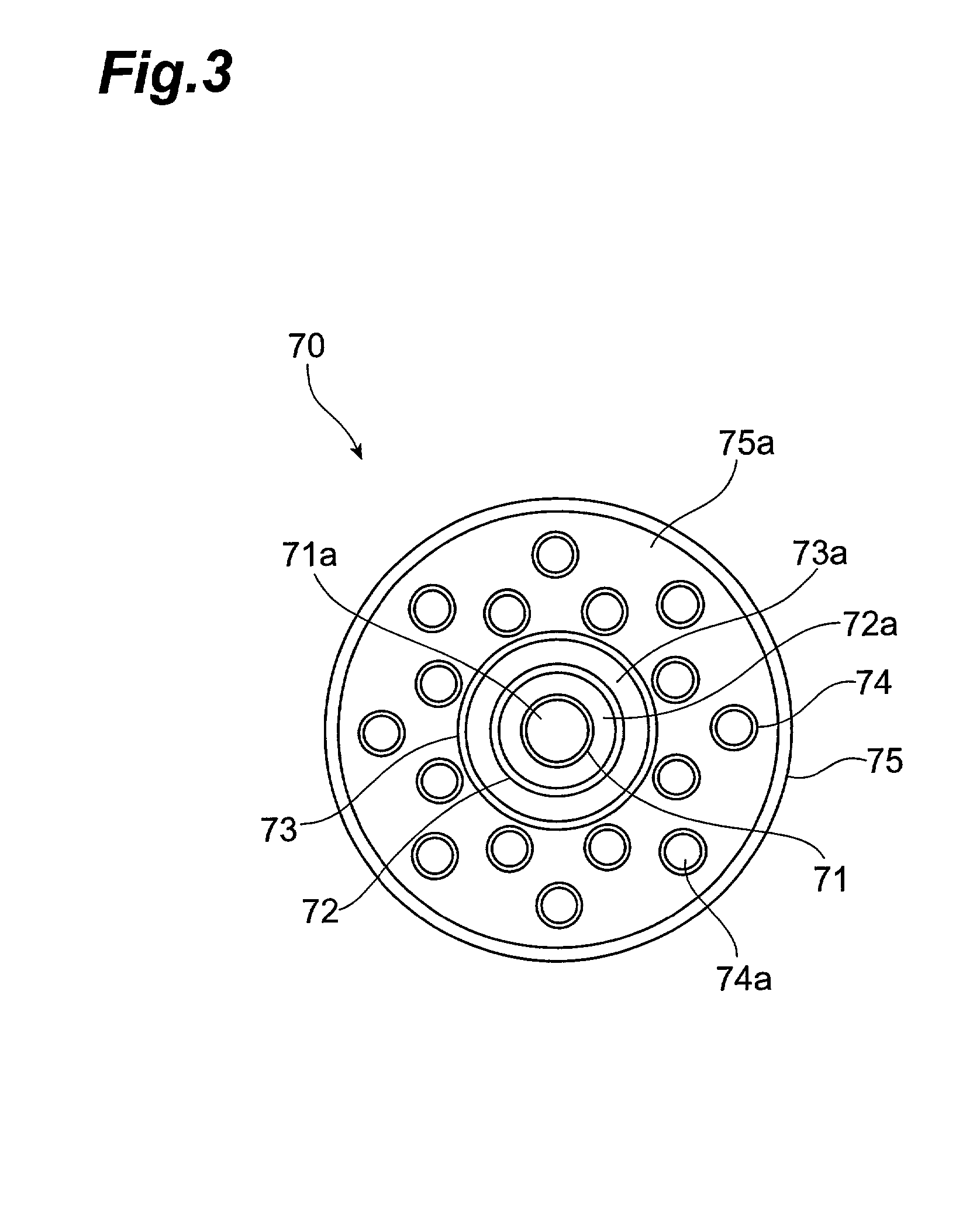Synthetic silica glass member, photolithography apparatus and process for producing photolithography apparatus
a technology of photolithography and silica glass, applied in the field of synthetic silica glass members, to a photolithography apparatus and a process for producing the photolithography apparatus, can solve the problems of limited lens materials used in illumination optical systems and projection optical systems, poor light transmittance for practical use, and strict limitations on the use of silica glass members made of silica glass alon
- Summary
- Abstract
- Description
- Claims
- Application Information
AI Technical Summary
Benefits of technology
Problems solved by technology
Method used
Image
Examples
Embodiment Construction
30 0.385 yes 0.0016 1.6 .times. 10.sup.18 0.2 0.00078 4 Example 2 30 0.385 yes 0.0013 1.6 .times. 10.sup.18 0.5 0.0018 4 Example 3 30 0.382 yes 0.0015 1.1 .times. 10.sup.18 0.7 0.0014 4 Example 4 30 0.385 yes 0.0011 1.6 .times. 10.sup.18 1 0.0025 4 Example 5 30 0.378 yes 0.0016 1.8 .times. 10.sup.18 2 0.0025 4 [variation width V: [0.0022 - 0.0032] -20% .ltoreq. V .ltoreq. +20%] Example 6 30 0.385 yes 0.0014 1.6 .times. 10.sup.18 10 0.005 4 Example 7 30 0.386 yes 0.0014 1.5 .times. 10.sup.18 100 0.0025 4 Example 8 30 0.388 yes 0.0012 9.8 .times. 10.sup.17 200 0.0025 4 Example 9 30 0.378 yes 0.0016 1.8 .times. 10.sup.18 2 0.005 3 [variation width V: [0.0075 -0.0010] -60% .ltoreq. V .ltoreq. +60%] Comp. 45 0.246 no 0.0043 5 .times. 10.sup.18 2 0.0142 0 Ex. 1 Comp. 45 0.246 yes 0.0047 5 .times. 10.sup.18 200 0.0057 0 Ex. 2 Comp. 60 0.355 no 0.0011 6 .times. 10.sup.18 200 0.0375 1 Ex. 3
[0090] From Table 1 it was confirmed that for all of the samples having a hydrogen molecule concentrati...
PUM
| Property | Measurement | Unit |
|---|---|---|
| wavelength | aaaaa | aaaaa |
| specific wavelength range | aaaaa | aaaaa |
| specific wavelength range | aaaaa | aaaaa |
Abstract
Description
Claims
Application Information
 Login to View More
Login to View More - R&D
- Intellectual Property
- Life Sciences
- Materials
- Tech Scout
- Unparalleled Data Quality
- Higher Quality Content
- 60% Fewer Hallucinations
Browse by: Latest US Patents, China's latest patents, Technical Efficacy Thesaurus, Application Domain, Technology Topic, Popular Technical Reports.
© 2025 PatSnap. All rights reserved.Legal|Privacy policy|Modern Slavery Act Transparency Statement|Sitemap|About US| Contact US: help@patsnap.com



